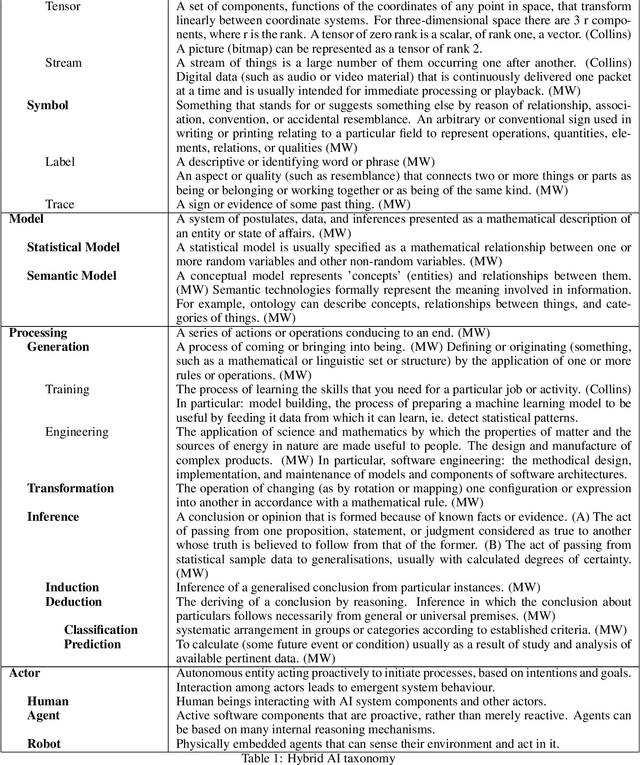André Meyer-Vitali
Modular Design Patterns for Hybrid Actors
Sep 20, 2021



Abstract:Recently, a boxology (graphical language) with design patterns for hybrid AI was proposed, combining symbolic and sub-symbolic learning and reasoning. In this paper, we extend this boxology with actors and their interactions. The main contributions of this paper are: 1) an extension of the taxonomy to describe distributed hybrid AI systems with actors and interactions; and 2) showing examples using a few design patterns relevant in multi-agent systems and human-agent interaction in general and, specifically, in the manufacturing domain.
Modular Design Patterns for Hybrid Learning and Reasoning Systems: a taxonomy, patterns and use cases
Feb 23, 2021
Abstract:The unification of statistical (data-driven) and symbolic (knowledge-driven) methods is widely recognised as one of the key challenges of modern AI. Recent years have seen large number of publications on such hybrid neuro-symbolic AI systems. That rapidly growing literature is highly diverse and mostly empirical, and is lacking a unifying view of the large variety of these hybrid systems. In this paper we analyse a large body of recent literature and we propose a set of modular design patterns for such hybrid, neuro-symbolic systems. We are able to describe the architecture of a very large number of hybrid systems by composing only a small set of elementary patterns as building blocks. The main contributions of this paper are: 1) a taxonomically organised vocabulary to describe both processes and data structures used in hybrid systems; 2) a set of 15+ design patterns for hybrid AI systems, organised in a set of elementary patterns and a set of compositional patterns; 3) an application of these design patterns in two realistic use-cases for hybrid AI systems. Our patterns reveal similarities between systems that were not recognised until now. Finally, our design patterns extend and refine Kautz' earlier attempt at categorising neuro-symbolic architectures.
 Add to Chrome
Add to Chrome Add to Firefox
Add to Firefox Add to Edge
Add to Edge